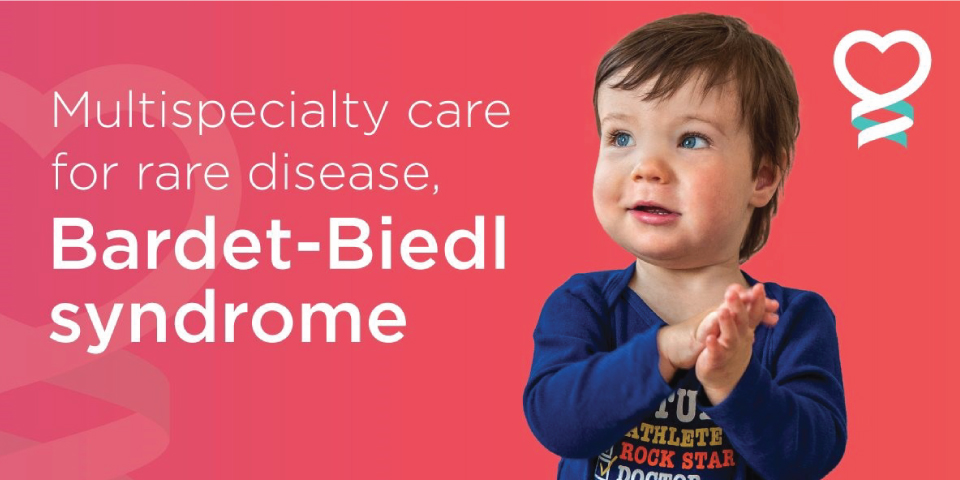A recent study published in the journal of Pediatric Obesity found 80-90% of children with Bardet-Biedl syndrome had obesity by 5 years old. By the age of two, 25% of children with BBS had obesity.
Bardet-Biedl syndrome is a rare genetic disorder present from birth that can cause obesity, impaired vision, chronic kidney disease and many other health concerns. The research was conducted by researchers at the Clinical Research Center and Center for Clinical Epidemiology and Population Health at Marshfield Clinic Research Institute.
Research on the syndrome is rare, but the Research Institute's Clinical Registry for Investigating BBS (CRIBBS ) made this research possible. The Registry brings together data from nearly 600 people with BBS so research can be conducted.
“It has long been recognized that obesity is a significant issue for those with BBS, however not a lot is known," said Jeremy Pomeroy, Ph.D., lead author on the study and associate research scientist at the Research Institute. “For example, how many people struggle with it and when it first occurs? For some it is present from shortly after birth and for others it emerges later."
This research is the start to understanding the underlying physiology of obesity in patients with BBS. This information can be given to providers to help them better understand how to help a patient with BBS.
“We can now see that interventions need to be initiated very early. Waiting until adolescence isn't preventing obesity in patients with BBS, but treating obesity," Dr. Pomeroy said. “To aim toward prevention, we need to start behavioral interventions in children less than two."
Looking at causal genes
The research also was able to look at the two most common causal genes for BBS, BBS1 and BBS10, and determine if a genetic phenotype causes or is protective of obesity. It had previously been suggested, based on sparse evidence, that BBS1 provides some protection against obesity relative to other BBS genes.
The research discovered that neither were protective against obesity. For those with BBS1, they had a lower body mass index score from ages 2-5 and 6-11. However, in the older age groups, they had similar obesity rates as BBS10. Both children with BBS1 and BBS10 had obesity at high rates.
“From a clinical perspective, people with BBS1 are in as much need for treatment options as BBS10," Dr. Pomeroy said. “In prior research, it was suggested that BBS1 could be protective, but that wasn't true."
Height findings
The researchers also look at height because some rare genetic obesity conditions have a shorter stature. In those with BBS less than 12 years of age, their height is a little above average. Once they reach adolescence (12-19), then their height goes back down to average.
“So if an adolescent has high obesity and their height is average, it is a clue that they have BBS and not another genetic condition," Dr. Pomeroy said.
In the next phase, the group plans to better understand how obesity develops in those with BBS by looking at weight changes longitudinally in children with BBS. They will be able to compare height and weight to see when there is a significant increase in their weight relative to height.
Additional achievements
This publication was a great milestone for the CRIBBS registry, as it was by far the largest cohort of people with BBS for this type of analysis, and it demonstrates the value of this unique registry.
“We can be much more certain in what we are finding and can translate into a lot of value in how confident we are when working with providers and the BBS community," Dr. Pomeroy said.
The paper also was accepted by Pediatric Obesity without revisions. Dr. Pomeroy commends the work of the research team and Marie Fleisner, scientific writer for the Research Institute, with this accomplishment.
“Marie was very helpful in the process of the actual submission of the manuscript to the journal. She did a lot of work in terms of formatting, writing a draft of the cover letter and the actual process of uploading the manuscript and required documentation to the journal website. She was extremely valuable," Dr. Pomeroy said.

